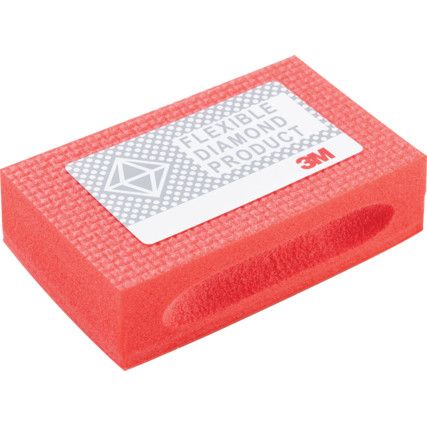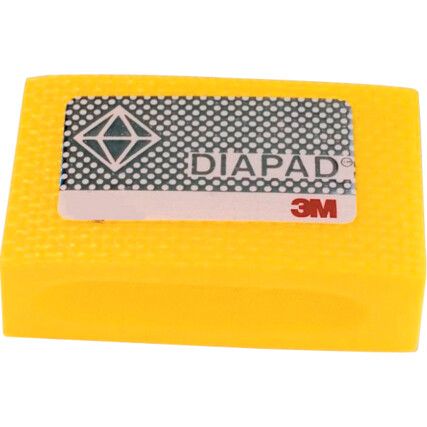Diamond Pads
For high-quality polishing and finishing of natural stone and concrete, browse our selection of diamond polishing pads from market-leading suppliers 3M™.
What are diamond polishing pads?
These abrasive products feature a pad coated with a mix of resin and industrial diamond chippings or dust for use on natural stone and concrete. They give an excellent smoothing finish, while wet diamond pads polish to a shine and dry diamond pads effectively smooth dense materials, such as thick granite and concrete.
Diamond polishing pad types
Diamond polishing pads are available in two types to suit different material applications. For this reason they differ in price, with dry pads being the more expensive of the two.
• Wet diamond pads - These pads feature a resin and diamond (or diamond dust) coating with the addition of water cooling the resin to prevent overheating and the premature wear-out of the pads. These polish a wide range of natural materials, including granite, limestone, travertine and quartz
• Dry diamond pads - With the same combination of abrasive as the wet pads, the dry diamond pads feature a denser resin to allow for a tolerance of higher temperatures. These pads are ideal for polishing thick concrete and hard granite
Considerations when choosing diamond polishing pads
• Application - choose between a wet or dry diamond polishing pad based on the type of material you'll be using and the finish you require.
• Grade - choosing a high-quality diamond pad will cost more, however, the diamonds will be consistently sized to cut faster and deliver an excellent finish.
• Tool - Different tools are used for wet and dry diamond pads, so it makes sense that this will influence your choice.
Diamond polishing pad jargon buster
To help you find the right product for your project, we've outlined an associated quality standard to help you to better understand the specifications of our product range.
What does ISO 6106:2013 mean?
This standard defines the grain size checking methods for what are known as superabrasives. These include cubic boron nitride and industrial diamond abrasive. It designates the grading of the abrasive according to the sizing which is separated using a series of sieves.
Let's break it down...
• ISO - This is an abbreviation for the International Organization for Standardization who publish and maintain quality standards
• 6106 - This is the legislation number
• 2013 - This is the year this standard was last updated. It was confirmed in 2019 and remains current
FAQs
Which is better, wet or dry diamond polishing pads?
Both types of pads have their benefits, and which is best depends on the material you're polishing and the setting you work in. Wet diamond polishing pads can be used on practically any natural stone material to create a glass-like finish. However, the use of water with these pads is very messy and appropriate clothing should be worn during use.
Dry diamond polishing pads are designed to withstand higher levels of heat during polishing, and for this reason, they're ideal for polishing dense materials like thick concrete and granite. Their downside is that they produce a lot of dust, which in some cases can be hazardous. So, dust extraction and protective PPE must play a part in using these pads.
How are diamond polishing pads made?
The pads are coated with a blend of industrial diamond grit with resin. The resin can include various powders to create additional solidifying properties, which are especially useful for dry diamond pads. This blend of abrasive and adhesive creates a dense and layered abrasive surface that delivers a lasting performance.

